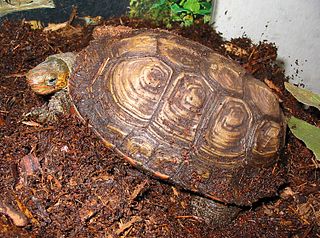Related Research Articles

The poinsettia is a commercially important plant species of the diverse spurge family (Euphorbiaceae). Indigenous to Mexico and Central America, the poinsettia was first described by Europeans in 1834. It is particularly well known for its red and green foliage and is widely used in Christmas floral displays. It derives its common English name from Joel Roberts Poinsett, the first United States Minister to Mexico, who is credited with introducing the plant to the US in the 1820s. Poinsettias are shrubs or small trees, with heights of 0.6–4 m (2.0–13.1 ft). Though often stated to be highly toxic, the poinsettia is not dangerous to pets or children. Exposure to the plant, even consumption, most often results in no effect, though it can cause nausea, vomiting, or diarrhea.

Matthew Raymond Dillon is an American actor and film director. He made his feature film debut in Over the Edge (1979) and established himself as a teen idol by starring in the films My Bodyguard (1980), Little Darlings (1980), the three S. E. Hinton book adaptations Tex (1982), Rumble Fish (1983), The Outsiders (1983) and The Flamingo Kid (1984). From the late 1980s onward, Dillon achieved further success, starring in Drugstore Cowboy (1989), Singles (1992), The Saint of Fort Washington (1993), To Die For (1995), Beautiful Girls (1996), In & Out (1997), There's Something About Mary (1998), and Wild Things (1998). In a 1991 article, famed movie critic Roger Ebert referred to him as the best actor within his age group, along with Sean Penn.

Caesalpinia pulcherrima is a species of flowering plant in the pea family Fabaceae, native to the tropics and subtropics of the Americas. It could be native to the West Indies, but its exact origin is unknown due to widespread cultivation. Common names for this species include poinciana, peacock flower, red bird of paradise, Mexican bird of paradise, dwarf poinciana, pride of Barbados, flos pavonis, and flamboyant-de-jardin. The Hawaiian name for this plant is ʻohai aliʻi.
Ipomoea pulcherrima is a species of plant in the family Convolvulaceae. It is endemic to Peru.

Flourensia is a genus of flowering plants in the daisy family. It contains subshrubs and shrubs, which are commonly known as tarworts. They are found in the southwestern United States, Mexico, Central America, and South America. The genus name honours French physiologist Jean Pierre Flourens (1794–1867).

The ornate or painted wood turtle is one of nine turtle species of the genus Rhinoclemmys of the family Geoemydidae. There are four recognized subspecies.

Onciderini is a tribe of longhorn beetles of the subfamily Lamiinae, they are prevalent across Europe in nations such as Turkey, and Finland.

Trestonia is a genus of longhorn beetles of the subfamily Lamiinae, containing the following species:
Trestonia albilatera is a species of beetle in the family Cerambycidae. It was described by Francis Polkinghorne Pascoe in 1859. It is known from Brazil.
Trestonia assulina is a species of beetle in the family Cerambycidae. It was described by Henry Walter Bates in 1874. It is known from Nicaragua, Costa Rica, and Panama.
Trestonia capreola is a species of beetle in the family Cerambycidae. It was described by Ernst Friedrich Germar in 1824. It is known from Brazil, Argentina and Paraguay.
Trestonia ceara is a species of beetle in the family Cerambycidae. It was described by Dillon and Dillon in 1946. It is known from Brazil.
Trestonia fasciata is a species of beetle in the family Cerambycidae. It was described by Martins and Galileo in 1990. It is known from Colombia.

Trestonia frontalis is a species of beetle in the family Cerambycidae. It was described by Wilhelm Ferdinand Erichson in 1847. It is known from Brazil, Ecuador, Bolivia, Colombia and Peru.
Trestonia fulgurata is a species of beetle in the family Cerambycidae. It was described by Buquet in 1859. It is known from Guadeloupe. It feeds on Inga ingoides.
Trestonia grisea is a species of beetle in the family Cerambycidae. It was described by Martins and Galileo in 1990. It is known from Brazil.
Trestonia nivea is a species of beetle in the family Cerambycidae. It was described by Martins and Galileo in 1990. It is known from Brazil, Surinam and French Guiana.
Trestonia pyralis is a species of beetle in the family Cerambycidae. It was described by Dillon and Dillon in 1946. It is known from Panama and Costa Rica.
Trestonia rugosicollis is a species of beetle in the family Cerambycidae. It was described by Martins, Galileo and de Oliveira in 2009.
Trestonia signifera is a species of beetle in the family Cerambycidae. It was described by Buquet in 1859. It is known from Martinique and Guadeloupe.
References
- ↑ BioLib.cz - Trestonia pulcherrima. Retrieved on 8 September 2014.